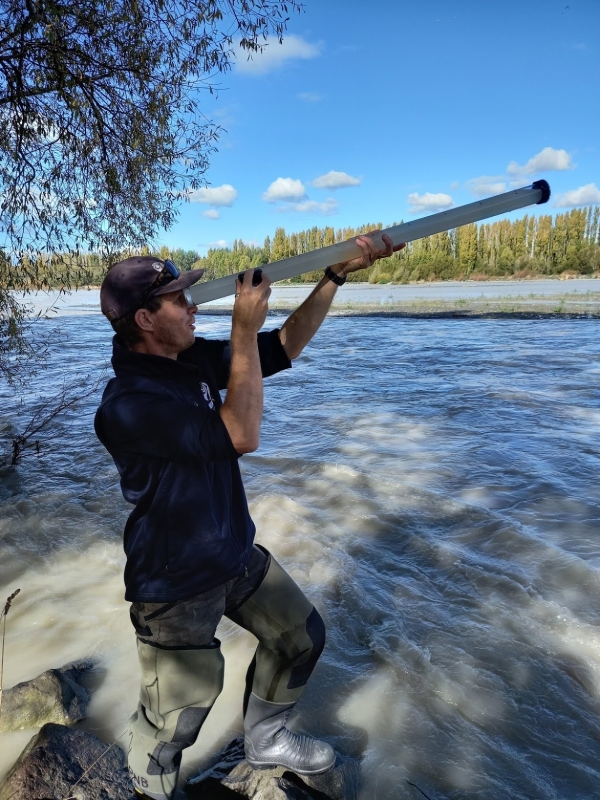Environmental monitoring technician Patrick Butler has spent hours travelling between the upper and lower reaches of Canterbury’s Waimakariri and Hurunui Rivers. His mission – river water quality sampling.
NIWA's Campbell Gardiner caught up with Patrick at his fourth and final sampling site - a picturesque, willow-lined setting next to Christchurch’s Northern Motorway.
After recording the sunny weather conditions on a form, Patrick dons a pair of waders and dangles a probe in the water to measure its temperature and dissolved oxygen. The device gives him an atmospheric pressure reading too.
Aside from the odd jet boat heading upstream, it’s quiet today. That’s not always the case. Sometimes passersby will stop for a yarn, interested in the sampling contraptions being used. One looks just like a ship’s telescope; another like a road cone.
Water clarity measurement is an important part of the field visit. Clarity is strongly related with how much suspended sediment is in the water. Because the water is extremely cloudy today, Patrick uses a magnetic SHMAK tube. On clearer days he’ll place a black disc underwater and use a periscope-type viewer to sight its distance.
After taking two water samples, Patrick quickly takes them back to the chilly bin in his work vehicle. UV light can kill the E. coli bacteria we need to measure in the samples so it’s important they’re stored in a cool, dark place.
He samples in the river’s main flow – at the exact same site every time, where possible. That can be a challenge with Canterbury’s braided rivers, which shift with the movement of rocks and sediment.
To finish up, Patrick checks the calibration of the dissolved oxygen device and makes a second water clarity measurement. Usually, he’ll check what freshwater organisms are clinging to plants and other river objects, along with a visual assessment of periphyton growth and cover. Unfortunately, the Waimakariri is too turbid for that job today.
River water quality sampling is a regular monthly task done by all our EIO Field Team regions across the whole country. It happens rain, hail or shine. More than 50 river sites are sampled monthly, with the samples going to NIWA’s Hamilton lab for nutrient and microbiological analysis.
Information collected finds its way into NIWA’s National River Water Quality Network programme (NRWQN), which has been operating for over 30 years. This nationally significant database is giving researchers a clearer picture than ever before of our national water quality trends.
Learn more about NIWA’s Stream Health Monitoring Assessment Kit (SHMAK).

